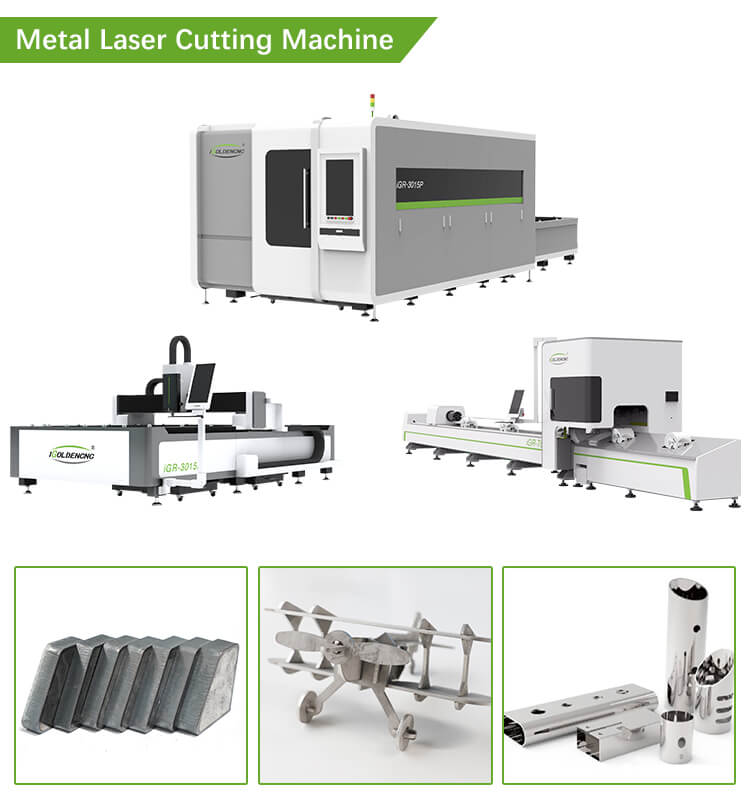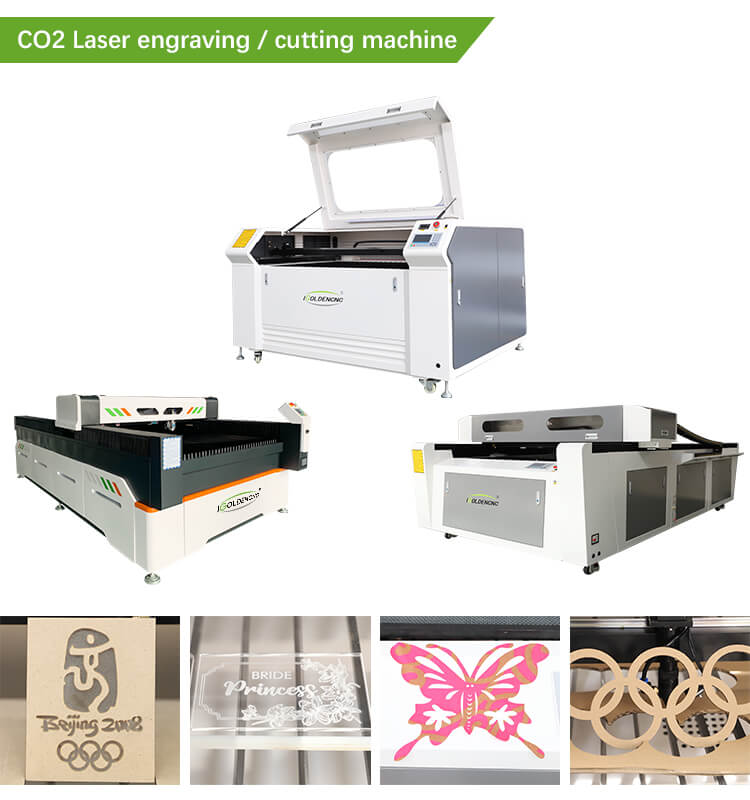Buyer Guide
Different Types of Laser Cutting Machine
Laser cutting machines are versatile tools used in various industries for precision cutting of different materials. There are several types of laser cutting machines available, each with its own advantages and suitable applications.
Different Types of Laser Cutting

Fiber Laser Cutting Machine
Fiber laser cutting machines use a fiber laser source to generate a laser beam. They are highly efficient for cutting metals, including steel, stainless steel, aluminum, brass, and copper. Fiber lasers have high power density, making them suitable for thin to medium material thicknesses and high-speed cutting.
A fiber laser cutter is an automated metal cutting machine that works with a CNC controller drived by CAM software to instruct a laser beam of 1064nm to cut out shapes and outlines from metal plates, pipes, rods and strips according to the layout file designed by CAD software to finish a metal fabrication project. It is a fine precision cutting tool for both sheet metals and tubes, as well as flat and beveled metal profiles. With a robotic arm, personalized 3D metal cuts are easily created. Non-contact cutting will not damage the substrate with smaller thermal influence of spot irradiation area. Fiber laser cutting machines are capable of cutting metals as thin as 1 mm and as thick as 200 mm, with powers ranging from 1,000 watts to 60,000 watts, and a maximum speed of more than 120 meters per minute.

CO2 Laser Cutting Machine
A CO2 laser cutter is an automatic engraving & cutting tool kit that works with a CNC or DSP controller to drive the carbon dioxide gas laser tube to emit a 1064μm laser beam to etch and cut nonmetals and metalloids. This is the most popular and widely used type of laser cutting machine. It uses a high-powered CO2 laser to cut through materials such as wood, acrylic, plastics, fabric, leather, and thin metals. CO2 lasers are efficient for high-speed cutting and offer good edge quality.
The choice between a fiber laser and a CO2 laser depends on the type of metal and its reflectivity. CO2 lasers emit long red and infrared wavelengths, which are often reflected by metals. On the other hand, fiber lasers emit shorter blue, violet, and ultraviolet wavelengths, which are absorbed by metals. Therefore, for metals that readily reflect longer wavelengths, a fiber laser is more suitable, while for metals that absorb shorter wavelengths, a CO2 laser is a better option.
3. Laser Cutting Machines for Fabrics
CO2 laser cutters and diode laser cutters are highly recommended for fabric processing due to their efficiency and cost-effectiveness, especially when compared to fiber lasers. Unlike metals, fabrics are incredibly thin and do not require high-power lasers for cutting. In fact, a 40W CO2 or diode laser is sufficient to cut and engrave various fabrics such as polyester, cotton, wool, and leather effortlessly.
When it comes to cost, CO2 laser cutting machines for fabric typically range from $500 to $4,000, while diode lasers designed for fabric cutting are priced between $300 and $1,000. These machines offer a practical and affordable solution for fabric processing needs, making them popular choices among fabric-based industries.
4. Laser Cutting Machines for Paper
CO2 laser cutters and diode laser cutters are highly recommended for laser cutting paper. Similar to fabric cutting, paper cutting does not require a powerful laser to achieve precise cuts and engravings on paper products such as cards and invitations. The power needed for cutting paper is significantly smaller compared to cutting fabrics, let alone cutting metals.
In summary, both CO2 laser cutters and diode laser cutters are excellent choices for laser cutting paper. Their lower power requirements, precision, and cost-effectiveness make them ideal for achieving intricate cuts and engravings on various paper products.
5. Laser Cutting Machines for Wood
CO2 and diode laser cutters are considered the top choices for cutting wood, similar to fabric and paper. Wood does not require high power to be vaporized by lasers.
6. Laser Cutting Machines for Acrylic
CO2 lasers are highly recommended for cutting acrylic due to their efficiency and quality. Acrylic readily absorbs the red and infrared wavelengths produced by CO2 lasers, resulting in improved cutting efficiency and quality.
7. Laser Cutting Machines for Invitations
For creating invitations made from paper and similar materials, diode lasers are the recommended choice. They can easily produce intricate designs without the need for high-power lasers.
8. Laser Cutting Machines for Plastic
CO2 lasers are the best option for cutting plastics. Most plastics readily absorb the wavelengths produced by CO2 lasers, resulting in efficient cutting processes.

IGOLDEN BLOG
Thank you for visiting the iGOLDENCNC website. iGOLDENCNC is the professional supplier of CNC machinery application solution, within the business of producing and selling CNC machinery and accessories.